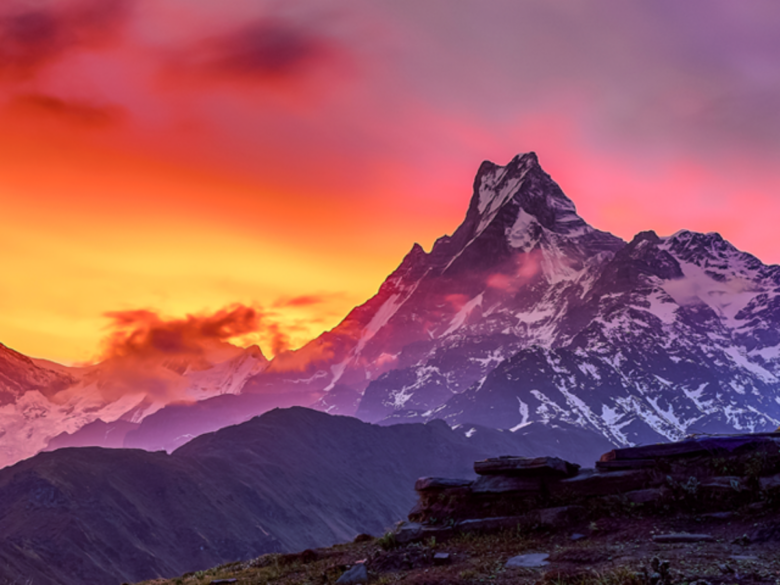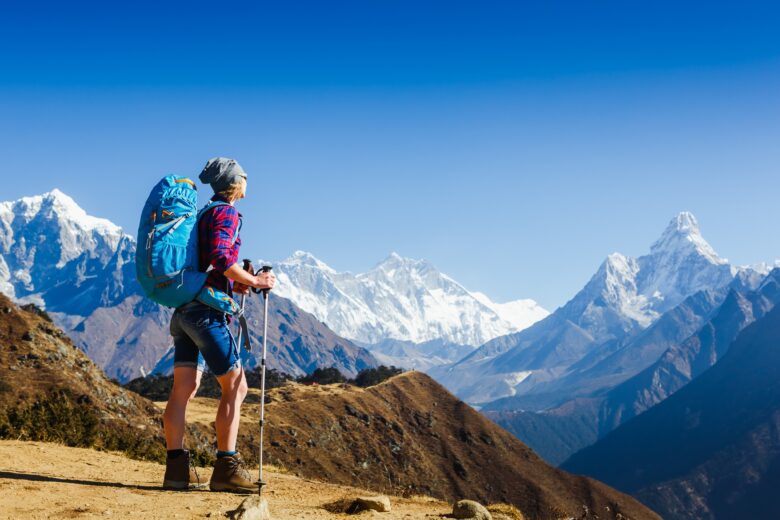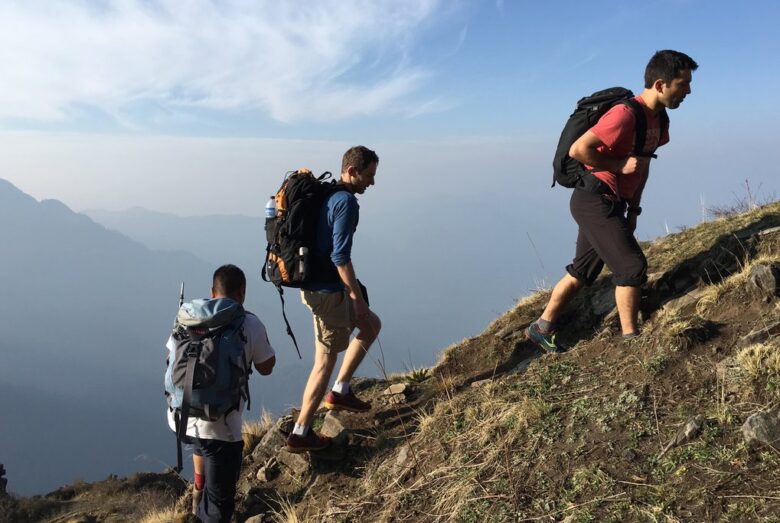Nepal is a Himalayan country located in South Asia. It’s easily one of the most popular destinations in the world for trekking, with a variety of routes and trails to choose from. If you were wondering if should you go on such an adventure, maybe this guide can help!
Contents [show]
Why trek in Nepal in particular?
With over four thousand square miles of stunning scenery, there are plenty of reasons to trek in Nepal – from its wide array of terrains and climate zones to the abundant wildlife that can be found along the way. Here are three reasons why trekking in Nepal is especially great :
- The weather is perfect – when you choose the right months like October or November. Temperatures range from comfortable 40 degrees Fahrenheit during the day to cool overnight lows of around 25 degrees Fahrenheit, and there’s hardly a cloud in the sky. This makes for great hiking and camping conditions, with no need for heavy gear or excessive sweating.
- The wildlife is active. With peaks such as Mount Everest (8,848 meters) and Cho Oyu (8,586 meters) looming in the background, trekkers can expect to see plenty of wildlife while on their journey – including ibex, snow leopards, rhesus macaques, red pandas, Himalayan brown bears and many more.
- It is relatively easy. With well-maintained trails and minimally steep inclines/descents, most trails are accessible by anyone with some basic fitness level and good walking shoes and you can always look for guides and teams like nepalhikingteam.com

Source: hub.wtm.com
Overview of weather during the year
Nepal is home to a wide range of landscapes, from the high Himalayas to the valley floors. Different seasons carry different experiences. Here are some examples:
Jan-March: The Monsoon season is the best time to trek in Nepal because there is consistent rainfall and the trails are less crowded. However, due to the monsoon rains, many rivers become flooded and some areas can be dangerous.
April-June: Trekking during April and May is milder but also more crowded than during the Monsoon season. June is usually a cooler month but still offers good hiking weather.
July-September: September is the most popular time to trek in this destination because it’s cooler than other months and there isn’t as much rainfall. However, September can also be very busy because of all of the tourists who are visiting Nepal at this time.
Oct-Dec: Trekking during October and November is usually milder and quieter than during the other three months, but it can be much more crowded. December is usually the coldest month in Nepal, so it’s not the best time to trek.
What are the different types of trekking in Nepal?
There are three main types of trekking in Nepal – traditional, high altitude, and mountaineering trekking.
Traditional trekking takes you through rural villages and the countryside, while high-altitude trekking takes you to mountain peaks above 4,000 meters (13,000 feet). Mountaineering trekking combines both traditional and high-altitude trekking and can include climbing mountains, crossing glaciers, and scaling peaks.
No matter what type of trek you choose, be sure to take the time to enjoy the scenery and culture of Nepali villages along the way. Trekkers can stay in village guesthouses or in simple campsites by the trail.
If you’re looking for a guided trek with an experienced guide, visit one of the many Nepali travel agencies in Kathmandu or Pokhara. They will be able to help you plan your perfect trek with all the necessary information.

Source: trekroute.com
How to prepare?
A trekking destination like Nepal can be quite overwhelming if you don’t know what to expect. Here are some different things you need to take into account when planning your trip, from clothing and equipment to food and hydration.
When it comes to getting ready for your trek, think about your comfort level. Will you be comfortable with a high altitude? Are you up for long days on the trail? Make sure you research the trails in Nepal in advance so that you are prepared for what is ahead.
Equipment is another important part of preparing for a trek in Nepal. Make sure you have everything you need, including footwear, water filters, first-aid kits, and warm clothes. It is also a good idea to bring a tent, sleeping bag, and cooking gear.
Familiarize yourself with the climate. The high altitude and lack of humidity can make for a chilly journey, so pack clothes that will keep you comfortable both day and night.
Bring plenty of food and water. Trekkers usually carry enough food and water to last them for three days, although this may vary depending on the length of the trek. Make sure to pack snacks, energy bars, and sandwiches in case you run out of food along the way.
Bring a map and compass if you have them. Many treks take travelers through stunning mountain scenery, but there is no guarantee that you’ll be able to find your way back should something go wrong. A map and compass can come in handy if you get lost or want to explore an unknown part of the trail.
Carry a whistle if you have one. In case of an emergency, such as losing your way in the wilderness, blowing your whistle might help attract attention from passing hikers or rescuers.
What to bring on a trek in Nepal?
Here are some other essentials you’ll need when trekking in Nepal:
-A good map of the area
-Sunscreen and hats
-Maps of villages you’ll be passing through
– Whistle to signal for help
– First-aid kit including bandages, antibiotic ointment, and painkillers
– Spare clothes and shoes in case of accidents
– A sturdy backpack that can support your weight and additional gear
– Cash to buy food and supplies along the way
– A bottle of water per person
– Cellular phone to call for help if needed

Source: kimkim.com
Conclusion
There is no one-size-fits-all answer when it comes to trekking in Nepal. The best time of year for trekking will vary depending on the type of terrain you are exploring, the amount of rainfall that has occurred recently, and the weather forecasts for your specific trek. So if you are thinking about embarking on a trek in Nepal this year, be sure to research which month offers the best chance for a successful trip. Hope this helped!
